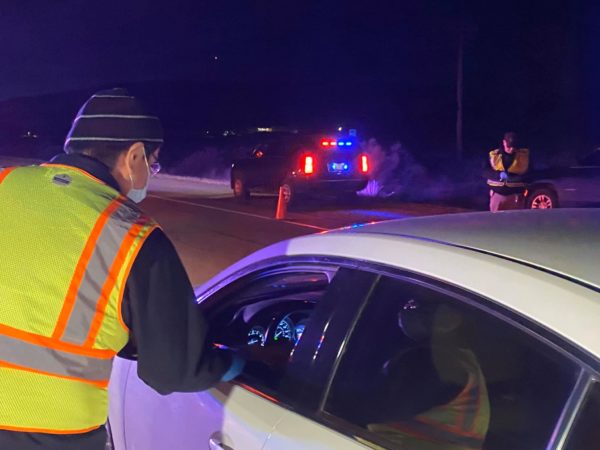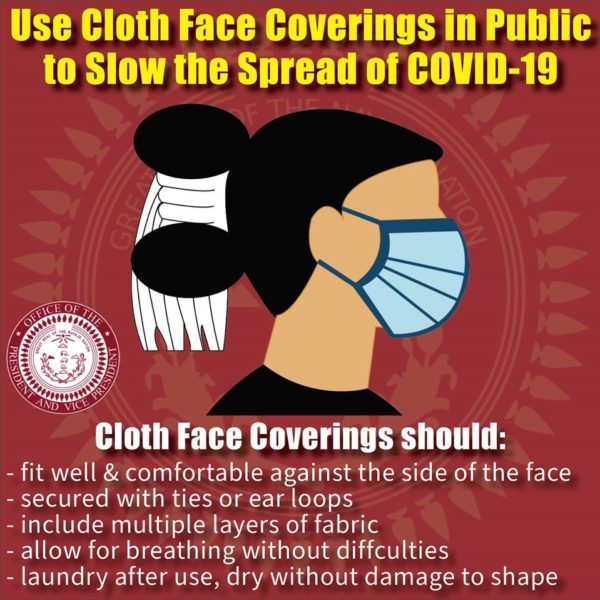
- Details
- By Native News Online Staff
ATLANTA — As COVID-19 spreads rapidly throughout the country, the Centers for Disease Control and Prevention (CDC) is now recommending that individuals wear face coverings in public settings where other social distancing measures are difficult to maintain (e.g., grocery stores and pharmacies) — especially in areas of significant community-based transmission.
In its recommendation, the CDC says recent studies show evidence that a significant portion of individuals with COVID-19 lack symptoms, known as being asymptomatic. The studies show that even those who eventually develop symptoms—pre-symptomatic—can transmit the deadly virus to others before showing symptoms.
As of Saturday morning, April 4, the number of deaths in the United States surpassed 7,000 and there are at least 278,458 diagnosed cases across the country.
The virus can be spread between even causal interaction between individuals when speaking, coughing or sneezing—even if no one is showing symptoms of having the coronavirus.
Friday’s announcement does not replace social (physical) distancing of staying six feet apart or frequently hand washing for 20 seconds.
Due to the lack of national supply of medical masks, the CDC states:
“The cloth face coverings recommended are not surgical masks or N-95 respirators. Those are critical supplies that must continue to be reserved for healthcare workers and other medical first responders, as recommended by current CDC guidance.”
While the CDC recommends that cloth face coverings can be homemade, it is important to know that not just any fabric is effective in allowing viral particles through the material.
According to Dr. Scott Segal, chair of anesthesiology at Wake Forest Baptist Health in Winston-Salem, North Carolina, “The best masks were constructed of two layers of heavyweight ‘quilters cotton’ with a thread count of at least 180, and had thicker and tighter weave.”
One rule of thumb: If you can see a substantial amount of light to shine through, it is probably ineffective because it will allow tiny viral particles through as well.
National Nurses United denounced the federal government’s recommendation that nurses wear bandannas and scarves if there are no medical masks and respirators to wear while testing and treating COVID-19 patients.
If you simply use a bandanna, make sure it is large enough to be folded at least twice and preferably three times, as the fabrics tend to be made of thin material.
Cloth face coverings should cover your nose and mouth.
On the Navajo Nation, President Jonathan Nez has been wearing a mask during the past couple of weeks when he interacts with the public. Friday night the Navajo Nation announced that there have been 270 diagnosed cases of the coronavirus and 12 confirmed deaths as the result of COVID-19.

More Stories Like This
'We Will Not Go Backward' | Cherokee Nation Invests $23M in Opioid TreatmentHHS Takes a Lifesaving Step Forward for Newborns in Tribal Communities
Office on Violence Against Women Government-to-Government Tribal Consultation Set for Jan. 21 - 23 at Mystic Lake
BREAKING: Feds Reverse $2B in Cuts to Addiction, Mental Health; Native Programs Restored
Trump Administration Cuts End Five Indigenous Health Programs at Johns Hopkins

